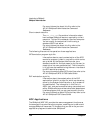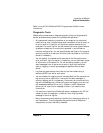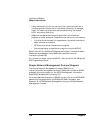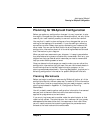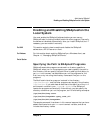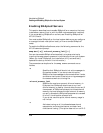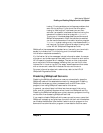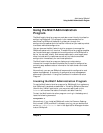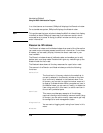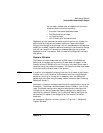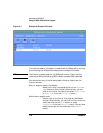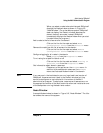
112 Chapter 3
Administering SNAplus2
Enabling and Disabling SNAplus2 on the Local System
Enabling SNAplus2 Servers
This section describes how to enable SNAplus2 on a computer that was
installed as a server (that is, with the SNA node components installed).
If you are enabling SNAplus2 on a client, see “Enabling SNAplus2 on
HP-UX Clients”.
You must enable SNAplus2 on the local system before you can configure
or manage the local node (either locally or from a remote SNAplus2
node).
To enable the SNAplus2 software, enter the following command at the
HP-UX command prompt:
snap start [ -s ] [ -m kernel_memory_limit] [ -t ]
You can also enable SNAplus2 automatically at system startup by
inserting the snap start command into the startup file on your system.
(When you install SNAplus2, the installation utility automatically
updates the startup file with this information.)
The parameters and options for the snap start command are as
follows:
-s
Specifies that SNAplus2 should not write messages to
the system console. If you do not use this option,
SNAplus2 writes messages to the console when it ends,
and also writes the text of certain error log messages to
the console as well as to the log file.
-m kernel_memory_limit
Specifies the maximum amount of kernel memory, in
kilobytes, that SNAplus2 should use at any time.
(Kernel memory is used for internal data structures.) If
a component of SNAplus2 attempts to allocate kernel
memory that would cause the total amount of memory
currently allocated to SNAplus2 components to exceed
this limit, the allocation attempt fails.
If you do not use this option, kernel memory usage is
not limited.
-t
Activates tracing on all interfaces between kernel
components, and also client/server and back-level
client/server tracing. (This option does not turn on DLC



